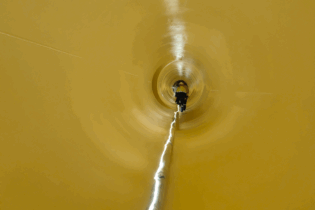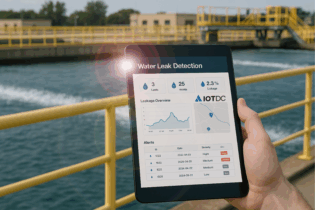Water shortages in the Rustenburg area put significant pressure on mines and communities alike. By accurately modelling its water balance, Lonmin was able to achieve significant improvements in water use efficiency as well as improve water security for the entire community.
By Danielle Petterson Platinum mining in the Rustenburg area led to a significant influx of people, placing immense pressure on the municipality’s water and sanitation services. As a result, the area has experienced water shortages since the early 1990s, sparking considerable focus on finding sustainable water solutions. Although mines had initially developed in isolation, it was soon realised that cooperation and coordination was required to assist authorities with the constrained regional water sources. From this it was identified that the accelerated implementation of water conservation and water demand management (WCWDM) was needed. Lonmin undertook a systematic approach, using water quality and demand requirements for various mining processes to develop a dynamic water balance model. The mining house’s WCWDM programme aimed to ensure sustainable water supply and use, to improve compliance and to inform the development of the Lonmin integrated water resource management system.A sizeable challenge
Lonmin’s significant area of operation boasts a water system spanning roughly 30 km. The mining company is responsible for delivering water to and from numerous mines, storage dams and pipelines, as well as distributing water to surrounding communities as a Water Services Intermediary. In order to undergo WCWDM and understand the potential, a more integrated view of Lonmin’s water resources and how the various mining areas and water uses integrate was needed to identify reduce, reuse and recycle opportunities. “It was an extremely confusing system to get involved in because it evolved over 30 years and was not initially designed to have three mines all connected to each other. The mining villages scattered across the area were also not properly planned,” says Mias van der Walt, MD, Bigen Africa. Lonmin faced the significant challenges of water shortages and spills, impacted community water services and a substantial compliance burden. The company was also experiencing frequent plant stoppages due to water shortages, amounting to millions of rands per day in production losses. According to Van der Walt, Bigen Africa was able to identify several areas for improvement. The opportunity existed to optimise external water sources, inter-transfer between mining areas, and reuse water in internal systems. In addition, discharges were not controlled and anthropogenic aquifers were not being used as storage sources.Developing a solution
The first step was to define the water demand for all of the mining areas. “That in itself was a huge effort because you need to understand the mining plan, what they are producing, the unit water consumption for the various sections, define the water sources, look at the water demand management strategies and then develop the water balance. And with that water balance, come up with different water management scenarios and develop a portfolio and WCWDM projects,” explains Van der Walt. Using the National Water Act and best practice guidelines, Lonmin developed specific strategies to avoid, reduce, reuse and recycle, namely:- Reduce losses through seepage and overflows
- Separate water circuits
- Integrate regional water systems
- Treat available dirty water to a higher standard to improve water reuse
- Dirty to grey water
- Raw to potable water
- Dirty to potable water
Of the numerous scenarios developed, no single scenario addressed all success criteria. Instead, a cumulative scenario was adopted in order to achieve the strategic objectives. This scenario included the installation of a cross-mine transfer pipeline between the three mines, developing boreholes from rehabilitated aquifers, and maximising local resources, among others. The result was that no additional water was needed for the mining of tailings, a reduction in Lonmin’s water purchases from Rand Water and reduced environmental discharge.
Lonmin went on to base its long-term WCWDM programme on the outcome of the optimised scenario. A number of projects were identified, planned and prioritised based on project outcomes in order to achieve the long-term goals.Significant water savings
This cumulative scenario showed a significant improvement in relation to the base case, as shown in Table 1. Lonmin’s acquisition from Rand Water could be reduced by 4.2 million m3/a – a substantial reduction of 46%. Similarly, environmental discharge could be slashed by 39%, or 643 148 m3/a. By reducing its demand, Lonmin was also able to free up more water for the surrounding communities, contributing to improved water security. To replicate these successes, Van der Walt believes a change in mindset around water is needed from management level down. Mine water systems, especially those evolving and expanding over many decades, are extremely complex and dynamic, but significant water efficiency improvements can be achieved. He argues that there is potential to ringfence sections of water systems, which can also assist the balance sheet of the mine without burdening their balance sheet. It is clear that by revisiting and critically assessing an existing mine water system, a win-win scenario for all stakeholders can be achieved. “Water is becoming a currency of scarcity, but significant water use improvements are possible through the implementation of various WCWDM strategies,” says Van der Walt.| Mining area | Water use aspect | Base Case (m3/a) | Optimised Scenario (m3/a) | Change (m3/a) |
| Karee | Rand Water use | 3 192 552 | 999 297 | |
| Environmental discharges | 788 547 | 391 191 | ||
| Western | Rand Water use | 3 446 155 | 2 205 578 | |
| Environmental discharges | 328 292 | 220 307 | ||
| Eastern | Rand Water use | 2 598 896 | 1 795 918 | |
| Environmental discharges | 524 307 | 386 499 | ||
| Total | Rand Water use | 9 237 603 | 5 000 793 | 4 236 810 (46%) |
| Environmental discharges | 1 641 145 | 997 997 | 643 148 (39%) |








